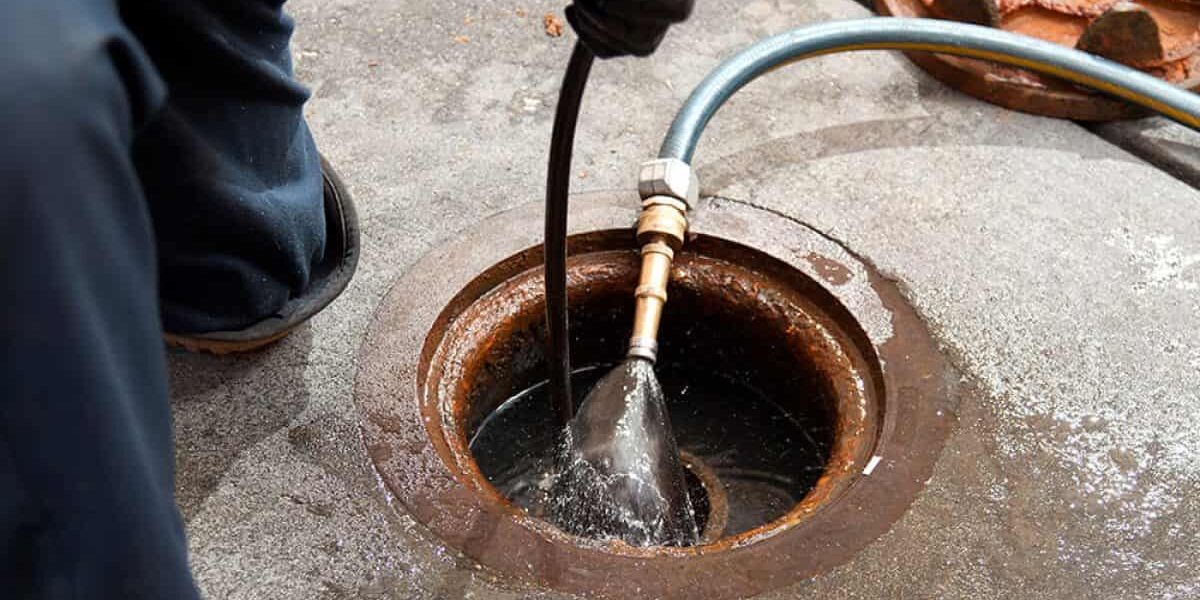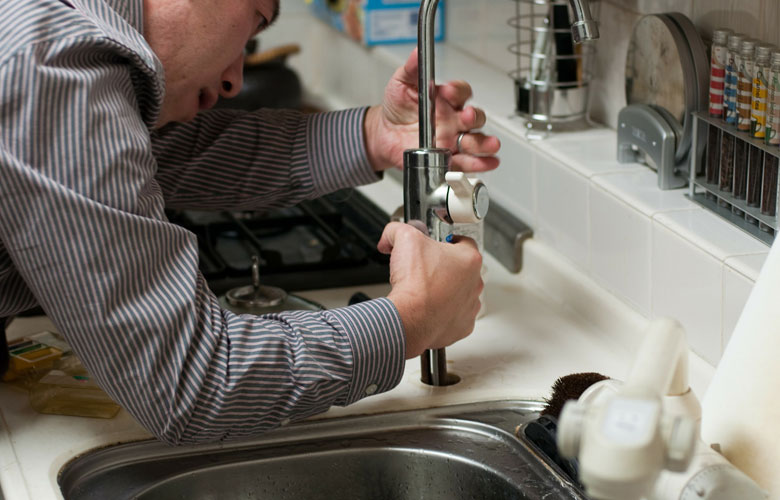Procedures for Addressing a Blocked Drain Before Calling Professional Plumbers
Procedures for Addressing a Blocked Drain Before Calling Professional Plumbers
Blog Article
What are your opinions on Some easy tips to fix blocked drains?

Intro
Dealing with a blocked drain can be a discouraging experience, interrupting everyday tasks and possibly creating damages to your residential or commercial property. Nevertheless, before connecting to pipes experts, there are actions you can take to attend to the problem yourself. In this guide, we'll explore DIY solutions and safety nets to take on an obstructed drain efficiently.
Identifying the Concern
The first step in resolving an obstructed drain is recognizing the indicators. Slow-moving drainage, gurgling audios, foul odors rising from drains pipes, or water backing up are common indicators of a blocked drainpipe. Determining these signs early can aid stop better issues.
Usual Root Causes Of Obstructed Drainpipes
Comprehending the aspects that add to drain pipes clogs is crucial for reliable resolution. Typical offenders include hair, soap scum, grease, food debris, and international things like sanitary items or paper towels. Tree origins getting into below ground pipes can likewise cause considerable obstructions.
DIY Solutions
For minor clogs, a number of DIY options can be efficient. Pouring boiling thin down the drainpipe can help dissolve oil and particles. Sodium bicarbonate and vinegar or a mix of salt and baking soft drink can work as all-natural cleansers. Making use of a bettor or plumbing serpent to remove obstructions is an additional choice.
Tools and Tools
Having the right tools on hand can make do it yourself drainpipe cleaning extra effective. A plunger is a functional tool for getting rid of blockages in sinks, commodes, and showers. A pipes serpent or auger can reach much deeper clogs, while drain cleaning chemicals can be utilized very carefully for persistent blockages.
Safety nets
To avoid future obstructions, taking on preventive measures is critical. Install drainpipe guards or filters to catch hair and debris before they go into the pipelines. Regularly flush drains with hot water to dissolve grease build-up, and stay clear of dealing with grease or solid waste down the tubes.
When to Call an Expert
While DIY services can fix minor clogs, specific indications indicate the need for specialist help. Consistent blockages, foul odors despite cleansing initiatives, or numerous drains pipes supporting all at once are warnings that warrant expert intervention.
Choosing the Right Plumbing Service
When selecting a pipes solution, take into consideration variables such as experience, licensing, and customer reviews. Choose a reliable plumbing with a track record of top quality workmanship and clear prices methods.
Expense Factors to consider
The price of specialist drain cleaning company can differ relying on the extent of the obstruction and the plumbing professional's rates. Request quotes from several service providers and inquire about any type of additional charges to make certain openness and avoid surprises.
Security Measures
When attempting DIY drainpipe cleaning, prioritize safety and security. Put on safety gloves and eyewear to prevent contact with unsafe chemicals or bacteria. Never ever blend various drain cleaning products, as this can generate unsafe fumes.
Situation Researches
Real-life examples show the effectiveness of DIY solutions and the value of prompt professional intervention in settling drainpipe obstructions.
Final thought
By following the tips outlined in this guide, you can efficiently tackle blocked drains pipes and protect against future pipes issues. Whether going with DIY services or seeking specialist support, prompt activity is crucial to maintaining a healthy plumbing system and preserving the stability of your home.
How to Clear a Clogged Drain Yourself (And When to Call In the Professionals)
What Can Clog a Drain
Dirt Skin flakes Hair Grease Soap scum Food Offset pipes Tree roots Small objects Mineral buildup DIY Tricks to Unclog a Drain
You can fix this! Once you have identified the source of the clog (or have a vague idea), you can try one or a combination of these fixes in order to clear your plumbing.
Wire Hanger or Snake
Untangle and clear out hair from a drainpipe with a homemade snake. Use a straightened-out wire hanger with a 90-degree angle hook to locate the clog and drag out any unwanted material.
Remember not to push the clog further down to where the wire hanger cannot reach! If you need to follow up with a plunger, give it a try. Your efforts might be more successful after it’s been wire-snaked.
If you want to get fancy and don’t have a wire hanger to spare, head to the store and pick up a hand-operated drain snake. You can get one for $10-$30. It may save you the hassle, and provide additional length to reach deep into the clogged pipe.
Plunger
A cup plunger has a suction cup attached to a wooden handle. The rubber creates a seal around the drain, and increases the pressure force of the plunger.
Plunge for 30-second increments to loosen the clog. This may need to be repeated over the course of 15-20 minutes. Once plunged, run the water to flush the remaining material out of the drain.
Remember– never use a plunger if you have used a chemical drain cleaner. These chemicals can splash up from the force of the plunger and cause serious injury or burns.
Boiling Water
Hot water can sometimes break up materials into a flushable amount. Dirt, grease, and soap buildup requires heat in order to unstick from surfaces.
Take your kitchen kettle and heat your water to a boil. Once it reaches a rolling boil, pour it directly down the drain into the blockage. Carefully follow with plunging, if necessary.
Don’t worry if this takes more than one try! It can often take multiple kettles and repeated plunging in order to clear a particularly stubborn clog.
Chemical Drain Cleaner
As a last resort, pick up a bottle of chemical drain cleaner. Drain-cleaning chemicals are potent, and not very good for the environment.
You may need to wear protective eyewear in gloves before handling your bottle of chemical drain cleaner. Follow the instructions printed on the bottle, and flush with water as soon as the instructions allow. Do not follow with plunging.
Baking Soda and Vinegar
As a safer alternative to chemical drain cleaner, baking soda and vinegar can create a chemical reaction that clears tough clogs.
Combine one cup of cleaning vinegar with one cup of boiling water, and set aside. Once you have done this, pour half a cup of baking soda down the drain. Give the baking thirty seconds to settle and cover a large portion of the problem drain.
Following the baking soda, pour down your vinegar and hot water solution. Once the vinegar and baking soda combine, the mixture will bubble and fix. Let this reaction fizzle in the drain for about an hour.
After an hour, follow with a kettle’s worth of hot water. The heat and liquid should flush out any remaining material.
When to Call a Plumber
If your DIY attempts haven’t cleared your clog drain, it’s time to call in a professional. It’s not worth losing access to your kitchen sink or high-traffic bathroom. A clog in a vital area can keep you from the things you’d rather be doing, and derail your routine.
Anytime a clog is causing water to spread is a time to call in a plumbing service. What starts out as a little bit of water can quickly grow into serious, expensive water damage.
Additionally, a serious clog can result in burst pipes or serious leaks. Make sure you know when to take it seriously!
https://myguysnow.com/how-to-clear-a-clogged-drain-yourself-and-when-to-call-in-the-professionals/

Do you appreciate reading about Some easy tips to fix blocked drains? Put a remark below. We'd be delighted to find out your feelings about this blog entry. In hopes that you come back again later on. Appreciated our blog entry? Please quickly share it. Let somebody else locate it. Thanks so much for taking the time to read it.
Book Service Report this page